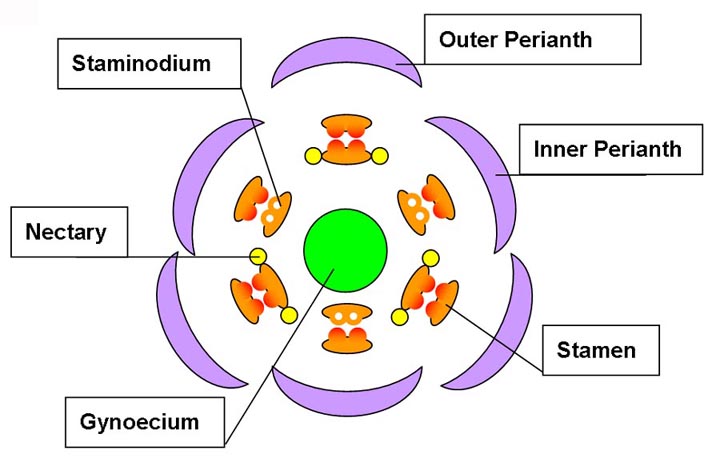Floral Characters
Inflorescence: Typically an axillary cyme or combination of cymes, sometimes helicoids, or axillary umbellate cymes. Flowers: Mostyly bisexual, usually actinomorphic or weakly zygomorphic, hypogynous, usually pentamerous. Calyx: United 5 sepals, usually persistant. Corolla: united 5 petals, corolla rotate to tubular. Androecium: stamens 5, free but inserted on the corolla tube (epipetalours) rarely stamens 4 and didynamous ( arranged in two whorls of 2 each). Gynoecium: A compound pistil of 2 united carpels; ovary obliquely placed, superior bilocular, or imperfectly 4-locular by false septum; Placentation axile.
Economic importance: Members of the family solanaceae provides drugs and food, some are weedy, some are poisonous, and others are handsome ornamentals. The most important plant in the family is Solanum tuberosum (potato-white or Irish Potato). In Ireland people are completely dependent on potatoes.
Lycopersicum esculentum (tomato), the favorite home garden vegetable, was once believed to be poisonous.
Other important food plants are Solanum melangena (egg plant or brinjal). The fruit of capsicum annum and capsicum frutescens are rich in vitamin C and A, are used as condiment. Physalis (Ground-cherry) produces an edible fruit enclosed in a bladder like persistent calyx, the husk, giving the name husk tomatoe.
Another plant of great commercial value is Nicotiana tabacum the leaves of which are dried and made into tobacco, which is used in making cigarettes. Many members of this family yield powerful alkaloids, e.g. atropa belladonna, datura which are rich in atropine and daturine respectively are used medicinally.
Many plants are cultivated in the gardens for their beautiful flowers, these includes petunia, Nicotiana, Cestrum and Solanum etc.

